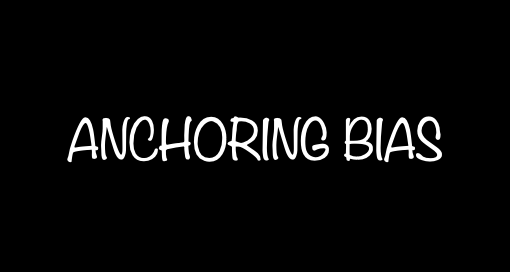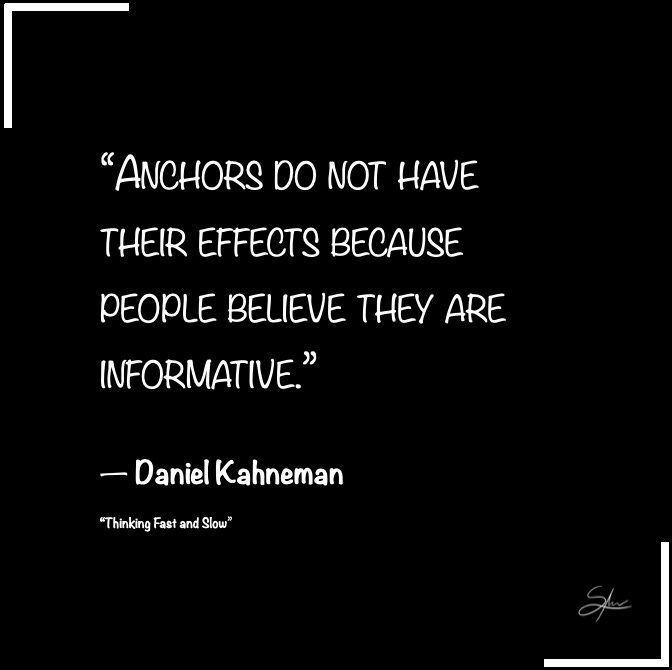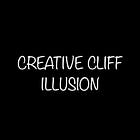Atomic Knowledge #15: Anchoring Bias
Anchors: how disproportionate first cues’ weights can skew our perception and invalidate our decision-making.
⏱️ Reading Time ≈ 1 min
The Anchoring Bias is our tendency to overvalue the very first piece of information we receive. This initial “anchor” wields a disproportionate influence over our judgments and decisions—even if it’s completely irrelevant. Although scholars had noticed this phenomenon before, it was formally defined in the 1960s. A classic illustration occurs in salary negotiations: perhaps you aim for an annual salary of €30,000, but your prospective employer starts by offering €25,000. This figure becomes your anchor, making an offer of €27,000 feel like “a step up” from €25,000 rather than €3,000 short of the target you originally had in mind. Studies reveal that even when people are aware of the arbitrary nature of the anchor, they’re still swayed by it. However, there are ways to counteract the effect: reevaluate that initial figure, check your mental state before deciding, ensure you’re negotiating in a clear-headed state rather than under pressure, and look for reasons why the anchor might be inappropriate or completely uninformative. In certain contexts, such as business dealings, you can even turn the anchor to your advantage by being the one to set it first. You can’t outrun biases, but you can outsmart them. The first piece of information may not be the truest—yet it often has the loudest voice. And if you can’t avoid an anchor, choose where to drop it so it works for you, not against you.
👋🏼 Make the most of it! Until next time, S.
Deepen Your Knowledge
Tversky, Kahneman, 1974 - Judgment under uncertainty: Heuristics and biases. (paper, doi)
Strack, Mussweiler, 1997 - Explaining the enigmatic anchoring effect: Mechanisms of selective accessibility. (paper, doi)
Marchiori, Papies, Klein, 2014 - The portion size effect on food intake. An anchoring and adjustment process? (paper, doi)









